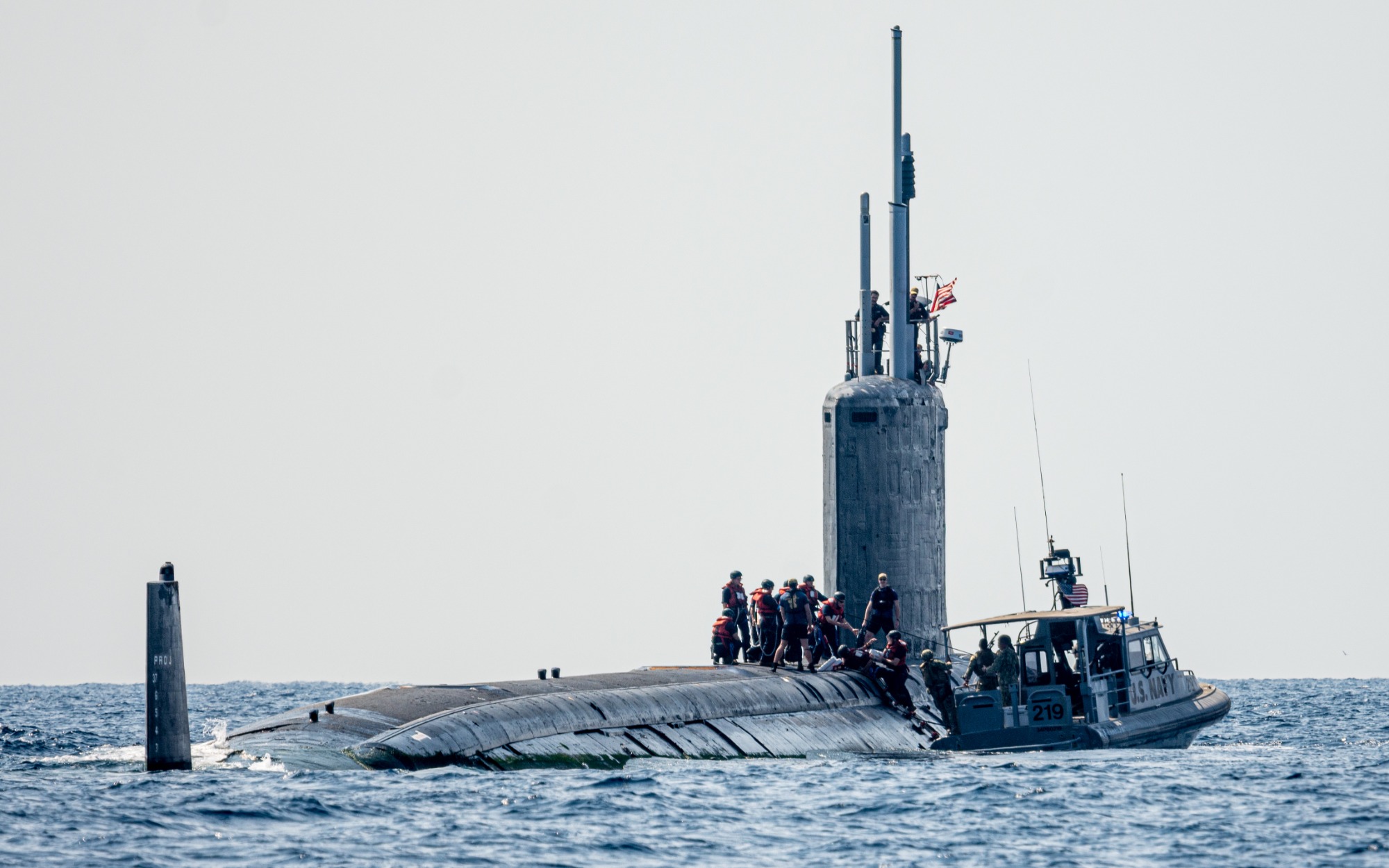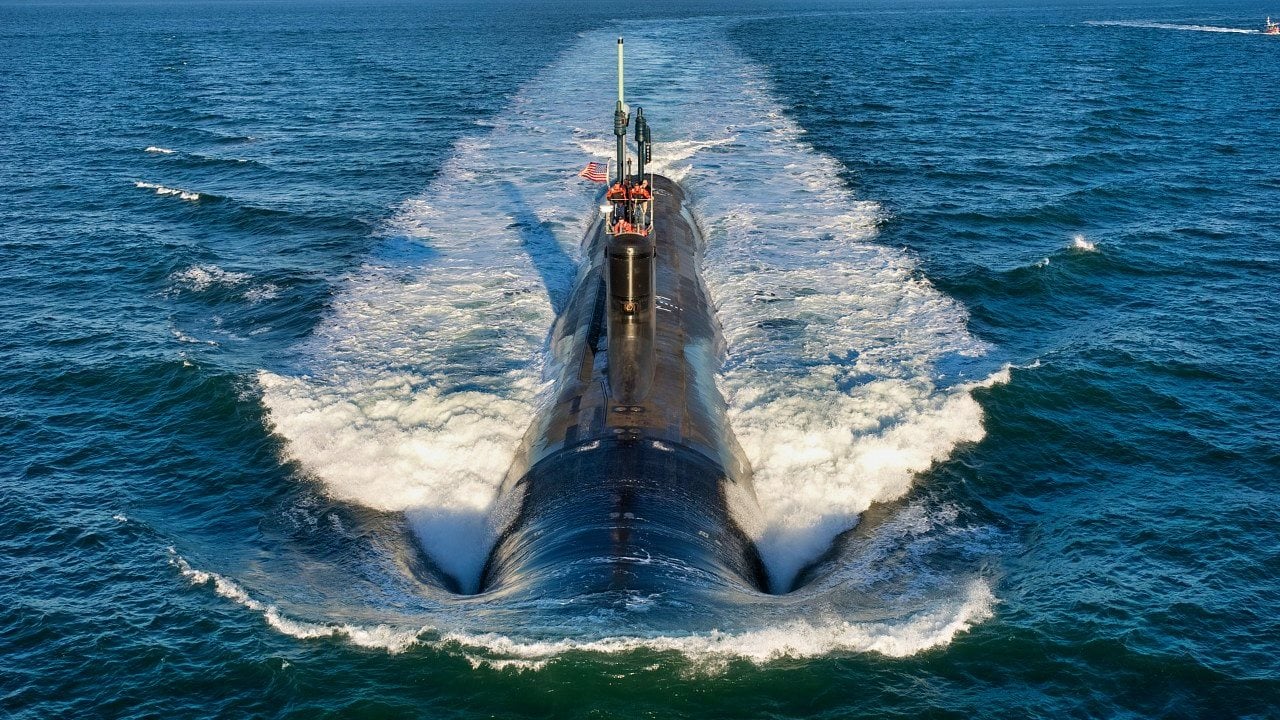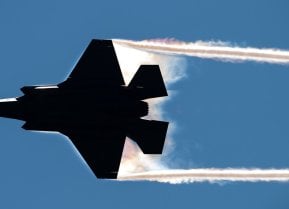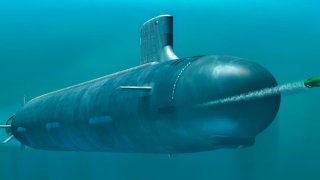30 Months Late: The Navy's Virginia-Class Submarine Shortage Is Real
The U.S. Navy's Fiscal Year 2025 budget proposal includes cuts to the Virginia-class submarine program, reducing the planned acquisition from two to one submarine.
Summary and Key Points: The U.S. Navy's Fiscal Year 2025 budget proposal includes cuts to the Virginia-class submarine program, reducing the planned acquisition from two to one submarine.

-This move has raised concerns among House Armed Services Committee members, who argue it could destabilize the defense supply chain and undermine U.S. undersea dominance.
-The reduction comes as the Navy faces delays in submarine deliveries, with boats arriving an average of 30 months late.
-The focus has shifted towards current operations and innovative technologies, with the potential threat from China looming large. The budget cuts highlight a strategic shift, prioritizing immediate readiness over long-term capabilities.
The U.S. Navy's Virginia-Class Submarine Drama Show
The United States Navy's nuclear-powered Virginia-class cruise missile fast-attack submarines are noted for incorporating the latest in stealth, intelligence gathering, and weapons systems. The boats which were designed for a broad spectrum of open-ocean and littoral missions, including anti-submarine warfare and intelligence-gathering operations are scheduled to replace the older Los Angeles-class submarines.
The sea service already has 23 of a planned 66 in service, and the submarines will be acquired through at least 2043 and will remain in service with the U.S. Navy through at least 2060 – while the final boats built could operate into the 2070s and beyond.
However, the U.S. Navy's Fiscal Year 2025 (FY25) budget request called for numerous cuts, including to the Virginia-class program. According to reports, the latest budget proposal includes money for only one Virginia -class attack submarine instead of the planned two. Even worse is the fact that while the U.S. Navy has been purchasing the fast attack submarines at a rate of two per year for the past four years, only an average of 1.2 submarines has been delivered annually.
The further reduction has sparked concern among House Armed Services Committee members, who have argued that such a move introduces instability into the defense supply chain and undermines the United States' undersea dominance.

"Simply put, now is not the time to insert instability in the supply chain with uncertainty in procurement rates,"House Armed Services Committee lawmakers argued in the letter to the Biden administration this past January. "The FY2025 budget will come at a pivotal time for the Virginia-class submarine program and sustaining our unmatched edge in the undersea domain. Any deviation from the planned cadence of the construction and procurement of two submarines per year will reverberate both at home and abroad, with allies and competitors alike."
The boats set to be delivered this year have been arriving on average 30 months late, and the U.S. Navy has delayed several major shipbuilding and modernization efforts. In that context, the sea service opted to save around $4 billion in the FY25 spending plan by nixing the second Virginia-class sub.
"We did reduce the funding to one Virginia-class submarine in FY25. But we maintain the funding for nine out of the planned 10 Virginia class [during the five-year FYDP]," Under Secretary Erik Raven told reporters.
The Focus on Now – Not Later for Virginia Submarines
The U.S. Navy's FY25 budget request has highlighted a strategic shift towards prioritizing current operations, personnel, and innovative technologies like unmanned systems – as these could yield faster results for the fleet.
The service is thus focused on the near-term, and considers the 2020s a decade of concern, with the potential for China to invade Taiwan before 2030.
As Brandon J. Weichert reported for The National Interest, it isn't just fewer Virginia-class submarines that will be coming soon. The Navy's SSN(X) program has also been pushed back – with the service focused on the coming decade rather than a platform that won't be in service until the 2040s.
Wiechert suggested that the U.S. Navy should go even further and focus on the Block V version of the Virginia-class to maintain its technological edge over China's submarines. Moreover, any potential conflict is likely to erupt much closer to the littoral waters of the Western Pacific rather than the deep blue sea, where the U.S. Navy still dominates.
The question is whether the U.S. has enough SSNs in the fleet, and the likely answer is that it doesn't. As Wiechert further suggested, it "will be the current crop of US submarines, not some fantastical prototype, that will decide the outcome of the undersea war."
If a war is real possibly – and fortunately that's still a very big IF – the United States doesn't have enough of anything, including submarines, surface combatants like aircraft carriers, and guided-missile destroyers, nor does it have enough aircraft. In a war, there will be losses, likely lots of losses. As noted, it could take years to replace any submarines lost as only about one is being delivered annually.

Even as China is out-producing the U.S., it can't replace its losses much faster. The hope is that cooler heads prevail with military thinkers seeing that such a war is unwinnable given the costs and risks that it wouldn't escalate into an even deadlier conflict.
Author Experience and Expertise: Peter Suciu
Peter Suciu is a Michigan-based writer. He has contributed to more than four dozen magazines, newspapers, and websites with over 3,200 published pieces over a twenty-year career in journalism. He regularly writes about military hardware, firearms history, cybersecurity, politics, and international affairs. Peter is also a Contributing Writer for Forbes and Clearance Jobs. You can follow him on Twitter: @PeterSuciu.
You can email the author or contact us: [email protected].
Image Credit: Creative Commons.


